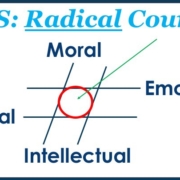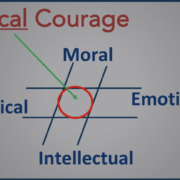What’s the Difference Between a Strategy and a Plan?

What’s the difference between a Strategy and a Plan?
Here are three things you need to know.
What’s the difference between a strategy and a plan?
We were executing our plan perfectly. All of our metrics indicated that we were on an upward trajectory. We were working hard, creating efficiencies, and consistently improving. We felt very good about our performance.
And yet, we were not succeeding.
That was exactly how I felt after the first 60 days as a commander in Afghanistan. I learned that while successful organizations perform at a high level, the reverse is not necessarily true.
When we begin talking, many of my clients express the unsettling feeling that something is missing – and that missing “something” is creating a gap between high performance and success.
The normal approach to this problem is to stay on the trajectory but work harder, in the belief that this will lead to incremental progress and greater efficiency.
The problem, however, is that high performance does not necessarily equal success.
This is a difficult truth to swallow, especially for leaders. To admit that is to recognize that the plan is flawed. What we are directing our employees to do, what we are prioritizing, and what we are measuring may all be off-target.
Leaders excessively concerned with execution can begin to drink their own Kool-Aid, believing that blips in performance are leading toward success. This can reinforce the blinders and refuel the desire to do the same things over and over again, but expecting different results. The technical term for this is confirmation bias.
This is where strategy comes in.
Strategy helps you expose disconnects between success and performance, ask the right questions, and adjust as the marketplace shifts under your feet.
Here are three critical differences between a strategy and a plan:
- A strategy faces outward, first. A plan faces inward
- A strategy orients on factors you don’t control; a plan focuses on what you do control
- A strategy measures success; a plan measures performance
Let’s break these down.
A strategy faces outward, first. A plan faces inward
A sound strategy begins with a diagnosis of the current marketplace and your place within it. This establishes the context in which you will advance your vision and mission.
This context is always dynamic. The marketplace is in a constant state of flux, influenced by factors like technology, social and political changes, government policy, competitor choices, and so forth. Your strategy should identify those factors most likely to affect your outcomes. How you believe they will unfold and shape the future become your assumptions.
Once you have outlined the context, you can develop your theory of success. This expresses what you intend to do to succeed. A good strategy process will develop and evaluate more than one theory of success, so you can choose the one you think is best.
Your plan faces inward. It focuses on how to execute the course of action delineated in your strategy. A good plan ensures these tasks are integrated and properly resourced.
*PRO-TIP: THIS 5-D PROCESS HELPS YOU DEVELOP A STRATEGY

A strategy orients on factors you don’t control; a plan directs what you do control
As outlined above, a wide range of factors will impact the environment within which your business exists and may potentially impact how successful you can be within a given context. You cannot simply wish them away. But what you can do is develop a tool that monitors and addresses these external drivers of change. That tool is your strategy.
A strategy is not a crystal ball that foretells how your organization can move toward a desired end-state. Nor is it a blueprint of the bridge from the present to the future. These analogies are too deterministic and too self-centered for a dynamic and uncertain marketplace.
A strategy is a hypothesis based on your diagnosis and chosen theory of success. It is a best guess that relies on assumptions about the future and factors you so not control. A proper strategy is explicit about these assumptions, allowing you to monitor them as the future unfolds.
Revising your assumptions later on is not a sign that you were wrong, but a reflection that you have been sensitive to the salient changes in the environment. When you revise your assumptions, you may need to modify your strategy.
*PRO-TIP: DISCUSS THE STRENGTH OF YOUR ASSUMPTIONS DURING YOUR QUARTERLY BOARD MEETINGS
Now that your strategy outlines how everything fits, you can make an implementation plan to direct the activities under your control. These activities should be properly resourced and integrated, and then broken down into team and individual workplans.
*PRO-TIP: HAVE THE PEOPLE RESPONSIBLE FOR EXECUTING THE PLANS DRAW THEM UP. MORE OWNERSHIP LEADS TO BETTER EXECUTION
Strategy measures success; a plan measures performance
Your strategy should outline your mission, vision, values, and goals. Your goals should focus on the impact and outcomes you seek to achieve. These become your strategic measures.
Your plan outlines the critical tasks you selected as important to implementing your strategy. Measuring performance enables you to assess the strength of the execution.
Keep your impact and outcome measures separate from your performance measures. This is because impact and outcomes are influenced by factors you cannot control.
High performance on your implementation tasks coupled with low achievement on your strategic goals is an indication that factors outside your control are undermining your ability to advance your mission and vision.
You need to understand these factors and adjust your strategy and plan accordingly.
*PRO-TIP: MINDING THE GAP BETWEEN SUCCESS AND PERFORMANCE WILL HELP YOU ADJUST FASTER THAN YOUR COMPETITORS
Getting the strategy right enabled our team of paratroopers to succeed in Afghanistan. A sound strategy helps our clients to create sustainable growth and impact.
To learn more about the difference between a strategy and a plan (and why a “strategic plan” tends to be a reverse Goldilocks), see our short video “Strategy versus Strategic Plan.”









